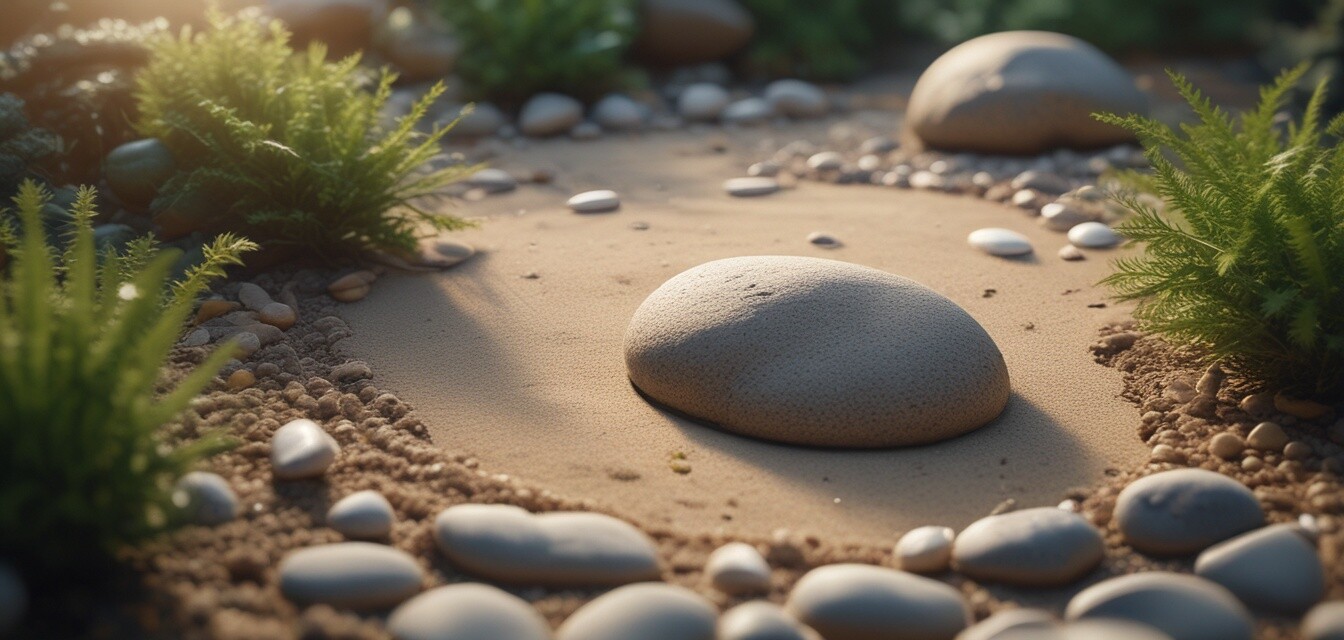
Designing a Relaxing Zen Garden
Key Takeaways
- A Zen garden promotes relaxation through simplicity and mindfulness.
- Incorporate elements like sand, stone, and minimalist plants.
- Design for balance and harmony to create a serene environment.
- Use water features and pathway designs to enhance tranquility.
- Consider the arrangement and maintenance for lasting beauty.
Creating a peaceful outdoor retreat is easier than you think. A Zen garden offers a beautiful way to promote relaxation and mindfulness, allowing you to escape from the hustle and bustle of daily life. In this guide, we'll explore the essential elements of a Zen garden and provide tips on how to design one that perfectly complements your outdoor space.
Elements of a Zen Garden
When designing your Zen garden, focus on simplicity and natural beauty. Here are the main components you should consider:
| Element | Description |
|---|---|
| Sand or Gravel | Represents water; its raked patterns create visual order. |
| Stones | Symbolize mountains or islands; choose smooth stones for a calming effect. |
| Plants | Incorporate minimalistic greenery like moss or dwarf shrubs to enhance tranquility. |
| Water Features | Consider small fountains or ponds to add soothing sounds. |
| Pathways | Guide visitors through the garden; use pebbles, stepping stones, or gravel. |
Steps to Create Your Zen Garden
- Choose the Right Location: Look for a peaceful area in your yard that receives a mix of sun and shade.
- Plan the Layout: Sketch a design that includes all elements, ensuring that they balance well together.
- Select Materials: Gather your sand, stones, plants, and other decorative elements based on your design.
- Prepare the Ground: Clear the area of grass and debris, then level the ground as needed.
- Install Elements: Start with the sand or gravel base, followed by stones and planting.
- Add Finishing Touches: Place any water features and pathways, making sure they flow well with the garden's design.
Creating a Peaceful Atmosphere
A Zen garden is not just about the physical components; it’s also about creating a peaceful atmosphere. Here are some ideas to enhance the ambiance:
Tips for Enhancing Your Zen Garden
- Incorporate soft, ambient lighting to create a serene evening experience.
- Use natural materials like bamboo to add warmth and texture.
- Include a bench or seating area for meditation or contemplation.
- Incorporate wind chimes or subtle water features to provide soothing sounds.
- Maintain a clutter-free space by regularly clearing debris and keeping plants trimmed.
Maintenance Tips
To keep your Zen garden looking its best, regular maintenance is essential. Here are some maintenance tips:
- Rake the sand or gravel often to preserve clean lines and patterns.
- Trim plants as needed to maintain their shapes and prevent overgrowth.
- Ensure water features are regularly cleaned and functioning well.
- Replace any stones or pebbles that may have shifted or become weathered.
Conclusion
Designing a relaxing Zen garden is a meaningful project that not only beautifies your landscape but also serves as a sanctuary for relaxation and mindfulness. With careful planning, thoughtful consideration of elements, and regular maintenance, you can create a serene space that reflects your personal style. Ready to dive deeper into your gardening journey? Explore our Garden Inspiration category for more creative ideas.
Pros
- Promotes relaxation and mindfulness.
- Low maintenance once established.
- Customizable to fit personal style.
- Enhances property value through aesthetic appeal.
Cons
- Initial setup can require time and effort.
- May need regular raking to maintain appearance.
- Limited plant variety due to minimalistic design.